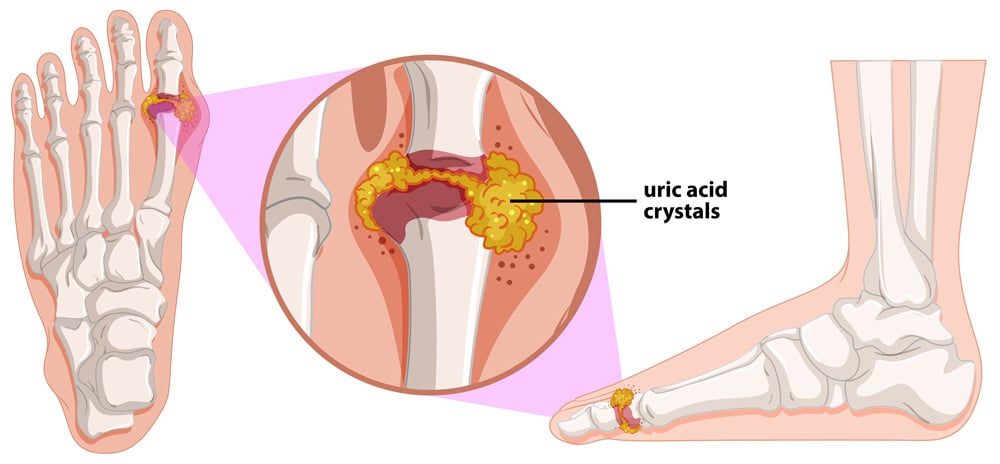Uric acid is a natural occurring compound in the blood which forms ions and salts called urates and acid urates.
These urates are passed through urine and for most people uric acid levels are kept in balance by the body naturally.
Uric acid is produced when your body breaks down purines. Purines are found in high concentrations in certain foods such as (but not limited to) organ meats, sardines, scallops, game meats, sugar and beer.
Uric Acid and Gout

High concentrations of uric acid is called Hyperuricemia and can lead to the formation of uric acid crystals in the joints.
Uric acid crystals are tiny needle-like objects which build up in the joints, most often the big toe but also in the knees and elbows.
These crystals cause immense amounts of pain even when the joint is not moving.
Over time, uric acid crystals can cause damage to the joint and bone which is why it is important to lower your uric acid levels soon rather than later.
Uric Acid Risk Level
| mg/dL | µmol/L | mmol/L | Risk Level |
| 5 or less | 300 or less | .30 or less | None |
| 5 – 6 | 300 – 350 | .30 – .35 | Low |
| 6 – 7 | 350 – 400 | .35 – .40 | Warning |
| 7 or more | 400 or more | .40 or more | Danger |
Uric Acid Measurement
There are two common scales used to measure uric acid concentration.
In New Zealand, Australia and most of Europe the most common scale is mmol/L (millimoles per liter).
Occasionally, the standard scale is modified to µmol/L (micromoles per liter), which is one thousand times smaller.
In the US the most common scale is mg/dL (milligrams per deciliter).
For this reason, uric acid levels are only one indicator of gout risk. Other factors such as age, weight, genetics, diet and lifestyle must also be entered into the equation when assessing the risk of experiencing gout.
